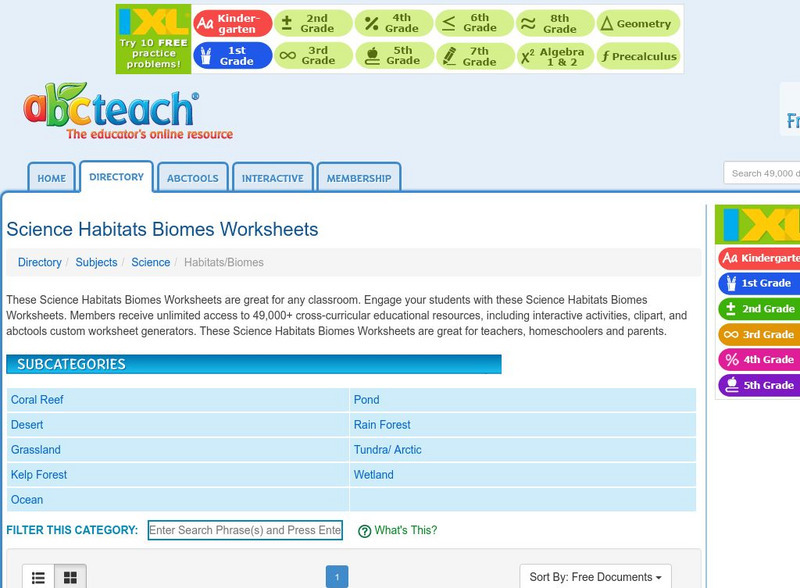Curated OER
Ecosystems Online
Learners work together to gather information on ecosystems from websites. They identify plants and animals and create their own website. They are graded on their willingness to work together and the content on the website.
Curated OER
The Arctic and Taiga Ecozone of Canada
Students examine the various sub-regions of the Arctic and Taiga zones in Canada. Using the online Canadian Atlas, they locate and describe the characteristics of each zone. They organize their information into a chart and share it with...
Curated OER
Grounded for Life
Second graders become familiar with the lives of penguins including their life cycles, habitats and basic needs. Students will experience the lives of penguins through stories and video.
Curated OER
Hide & Seek Butterflies
Students examine a variety of butterflies and discuss how they believe they get their color variations. In groups, they brainstorm the advantages and disadvantages of their color schemes. To end the lesson, they watch butterflies in...
Curated OER
Scenic Attractions in Four Corners
Fourth graders find and list scenic attractions in SE Utah and the Four-Corners-region. They identify geographic characteristics of Utah and other states in the western region of the United States. They review cardinal directions and...
Utah Education Network
Uen: Trb 4:5 Investigation 1 Wetlands, Forests & Deserts
Learn about surface terrain and how plants and animals are affected by the temperatures and precipitation.
University of California
Ucmp: The World's Biomes
This is an introduction to the major biomes on Earth. This page groups biomes into five major types: aquatic, deserts, forests, grasslands, and tundra. Information on climate, animal/plant life, and much more is given for each of type...
Other
National Wildlife Federation: Happenin' Habitats: What Is Habitat?
Find an overview of what a habitat is exactly. Then, for more information, click in the left hand menu for different types of habitat: forests, grasslands, deserts, wetlands, and arctic tundra. Authors also offer advice on creating a...
NASA
Climate Kids: 10 Interesting Things About Ecosystems
Discover 10 interesting things about ecosystems, including features of coral reefs, rainforests, deserts, grasslands, freshwater ecosystems, the tundra, the ocean floor, wetlands, boreal forests and big cities.
Other
Eco Library: Panoramas
Features amazing 360 degrees interactive panoramas for students to help them better understand ecological variation on our planet. Searchable by biome/ecosystem type, location, or ecological phenomena they depict.
abcteach
Abcteach: Habitats and Biomes
[Free Registration/Login Required] Find a variety of activities for children to do as they learn to identify varying habitats and biomes. Included are links to an even more extensive list of resources under coral reef, desert, grassland,...
Utah State Office of Education
Utah Science: What Do You Mean, We Are Different?
Across the state of Utah one will observe a variety of environments such as wetlands, desert, and forest. Here are several activities highlighting the many ecosystems found within one state.
Utah Education Network
Uen: Nhmu: Living Food Web
Fourth graders will be able to name some plants and animals that live in Utah's desert, forest or wetland ecosystems.
Utah Education Network
Uen: Science Vocabulary Game
Fourth graders will play a review memory game with Utah's Grade 4 Science Standard V vocabulary words during this lesson plan. Words associated with living things and classifications of living things are included in this lesson plan.
Utah Education Network
Uen: Utah's Plants and Animals Do You Know Where I Live?
Can you figure out what types of biomes different organisms belong in? You'll be presented with a variety of organisms and asked which of three biomes they belong in.















